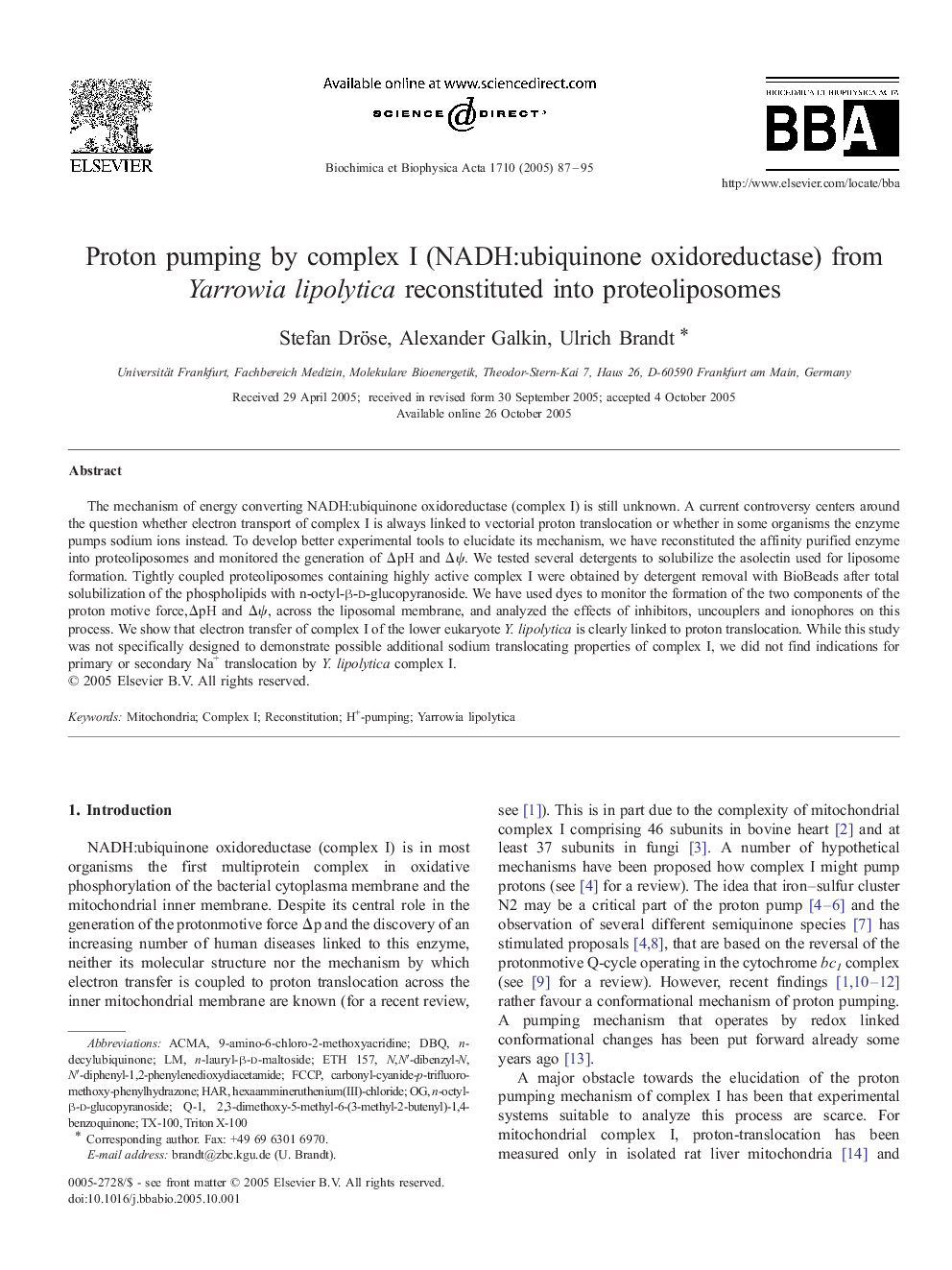| Article ID | Journal | Published Year | Pages | File Type |
|---|---|---|---|---|
| 9884685 | Biochimica et Biophysica Acta (BBA) - Bioenergetics | 2005 | 9 Pages |
Abstract
The mechanism of energy converting NADH:ubiquinone oxidoreductase (complex I) is still unknown. A current controversy centers around the question whether electron transport of complex I is always linked to vectorial proton translocation or whether in some organisms the enzyme pumps sodium ions instead. To develop better experimental tools to elucidate its mechanism, we have reconstituted the affinity purified enzyme into proteoliposomes and monitored the generation of ÎpH and ÎÏ. We tested several detergents to solubilize the asolectin used for liposome formation. Tightly coupled proteoliposomes containing highly active complex I were obtained by detergent removal with BioBeads after total solubilization of the phospholipids with n-octyl-β-d-glucopyranoside. We have used dyes to monitor the formation of the two components of the proton motive force,ÎpH and ÎÏ, across the liposomal membrane, and analyzed the effects of inhibitors, uncouplers and ionophores on this process. We show that electron transfer of complex I of the lower eukaryote Y. lipolytica is clearly linked to proton translocation. While this study was not specifically designed to demonstrate possible additional sodium translocating properties of complex I, we did not find indications for primary or secondary Na+ translocation by Y. lipolytica complex I.
Keywords
Related Topics
Life Sciences
Agricultural and Biological Sciences
Plant Science
Authors
Stefan Dröse, Alexander Galkin, Ulrich Brandt,
